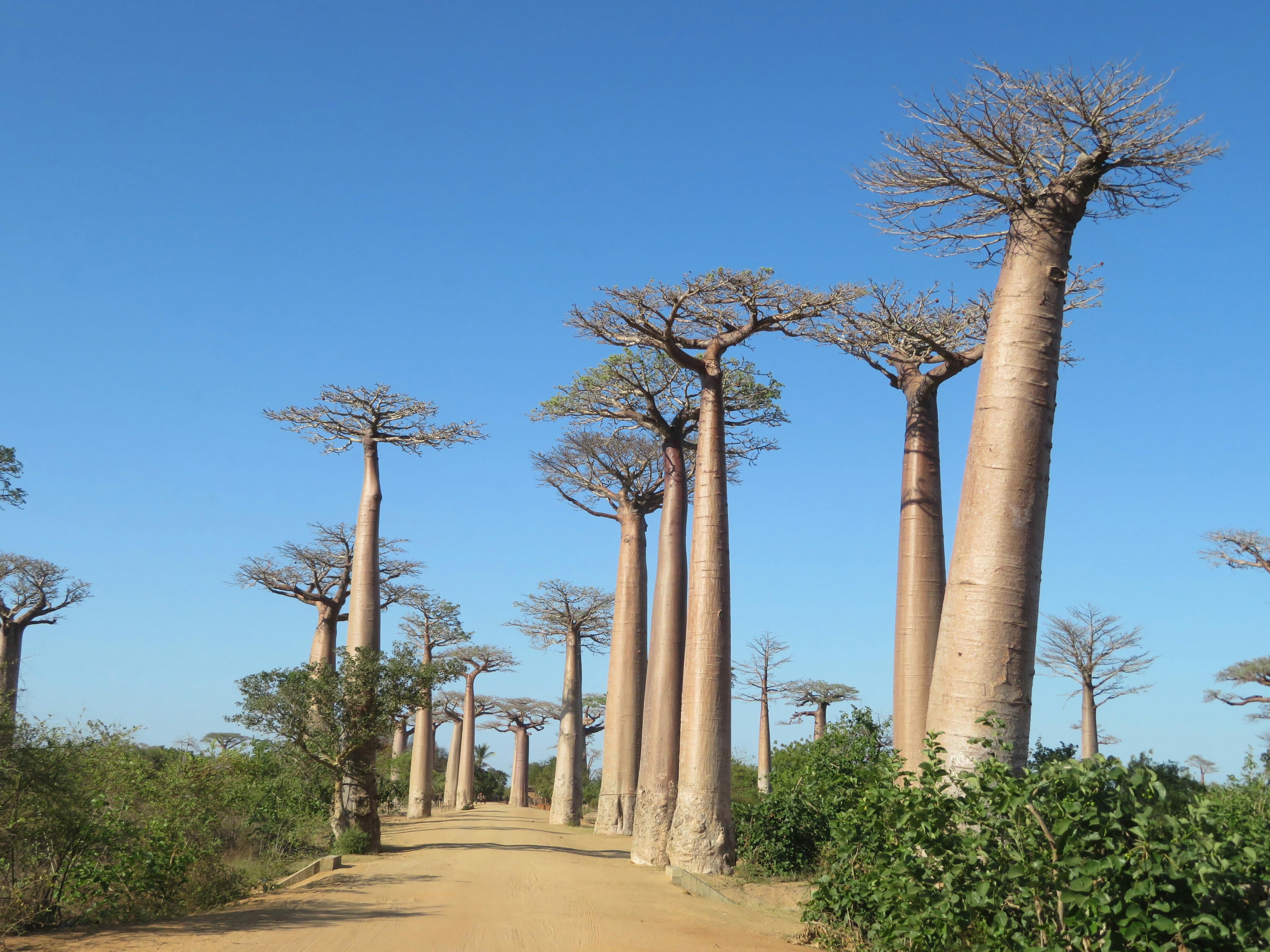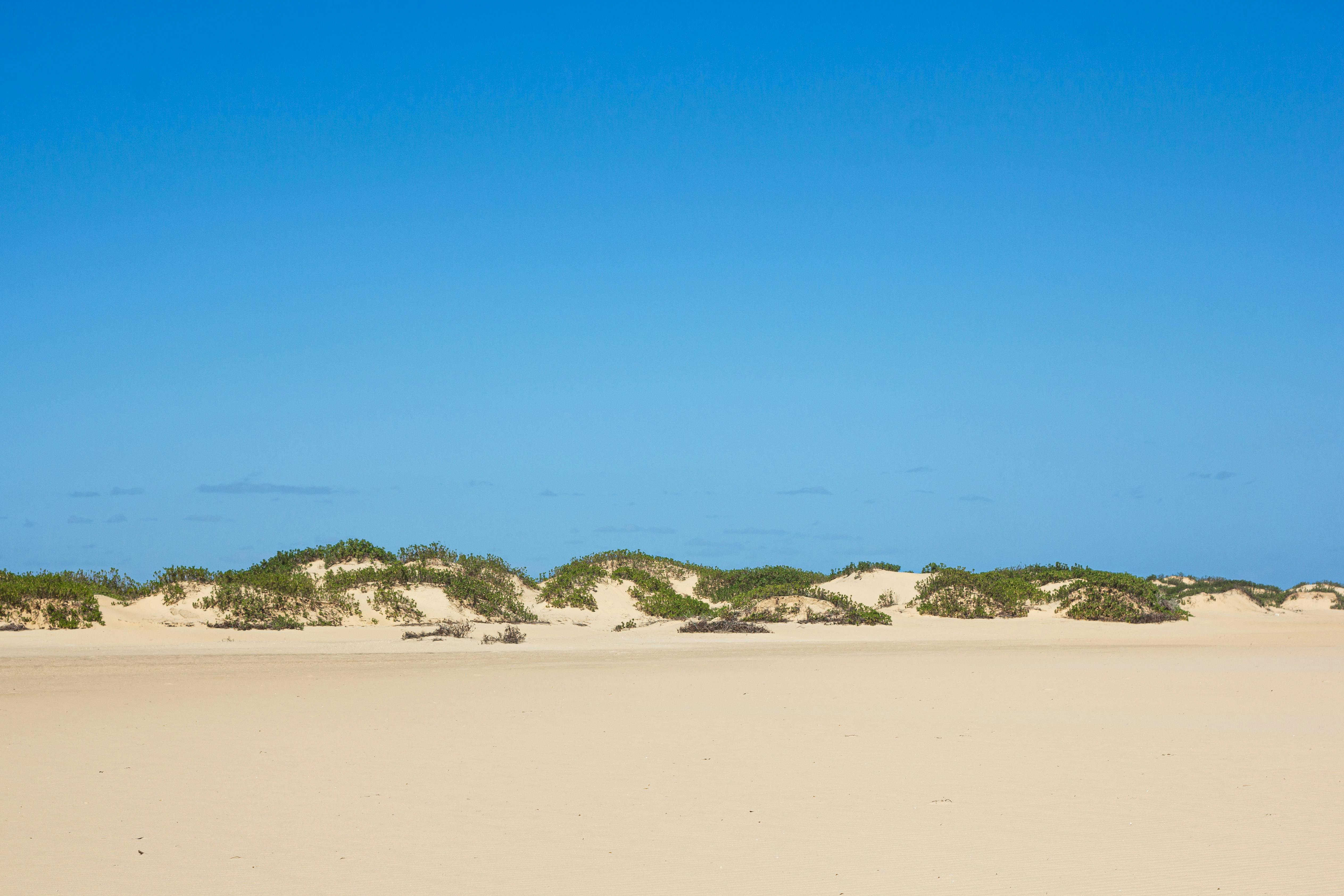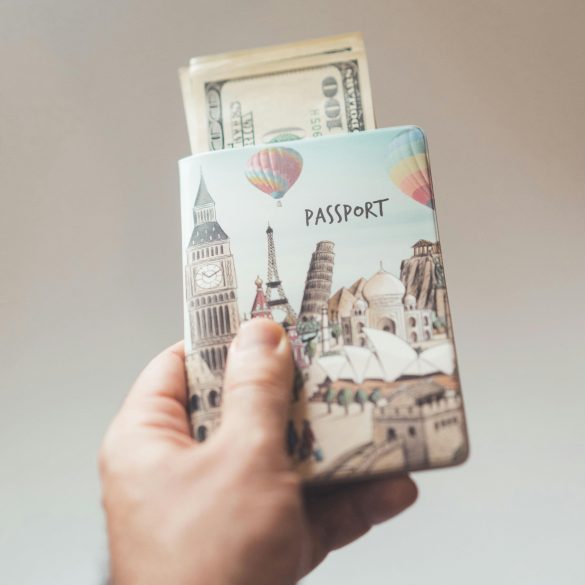Madagascar Tourist Guide 2025: Expert Tips, Itinerary & Local Secrets
Picture this: you’re standing beneath the alien silhouettes of centuries-old baobab trees, inhaling the earthy dusk as distant lemurs call out above a patchwork of savannah and rainforest—every sense electrified, utterly transported. That’s Madagascar for you. But—and here’s the side rarely romanticized by glossy brochures—the road you took was a teeth-rattler, your GPS still doesn’t quite make sense of local detours, and the breakfast you devoured in that back-alley Antananarivo cafe? Not a croissant in sight—unless sweet, coconut-fried sambos count. That, in my experience, is the real adventure of Madagascar travel: world-class wonder, mixed with authentic unpredictability, and encounters stitched into memory forever.
Why do so many travelers—safari buffs, wildlife photographers, even honeymooners—yearn for a Madagascar trip? In a word: uniqueness. Over 90% of its plants and animals are found nowhere else on Earth1. But I’ll be honest, planning a trip here is not like booking a weekend in Paris. It’s more like prepping for a science mission: you’ll need good maps, some flexibility, and, above all, a reason to say “why not?” when adventures and detours beg for a yes. For both first-timers and semi-seasoned explorers (like me, after two trips and a COVID-era virtual revisit), this Madagascar tourist guide is more than a polished itinerary; it’s a living, human snapshot of what to expect in 2025, littered with lessons, embarrassments, and genuine discoveries.
Why Visit Madagascar in 2025? Unmatched Nature, Untapped Adventure
Honestly, I’m still floored by how many people—in 2025!—think Madagascar is “just” another African island. The reality? It’s the fourth-largest island in the world, larger than Spain or California2, with a biodiversity that even long-time naturalists call “bonkers.” The argument for Madagascar in 2025 is stronger than ever: more flight connections post-pandemic, improved eco-lodges in the north, and heightened conservation efforts making it safer for both wildlife and wanderers. And, let’s get real, with the rise of over-tourism in Bali, Vietnam, even Kenya’s main safari circuits, those searching for true off-the-beaten-track experiences are heading to the Red Island.
Madagascar is home to more than 110 species of lemurs—primates found nowhere else on Earth. New species are still being discovered as recently as 2023, according to conservation organizations3.
Key Takeaway:
Madagascar rewards flexibility and curiosity. Bring an open mind, sturdy boots, and always a backup plan when connecting between regions. The unexpected will become your favorite memory.How to Plan Your Madagascar Adventure: My Personal Approach
Let’s be upfront—because if no one warns you, you’ll learn the hard way (like I did back in 2018, getting stuck in Morondava by a washed-out bridge): planning a trip here requires a little more grit than your average island escape. Here’s my current thinking on the fundamental steps:
- Decide on Priorities: Wildlife safaris? Beach chill? Culture deep-dive? Madagascar can’t be “all in one week.” You’ll need to focus.
- Choose Entry Point: Most fly into Antananarivo (Tana), but in 2025 several carriers operate direct flights to Nosy Be if you’re northern-coast bound4.
- Seasonal Research: Rainy season (Dec-Mar) = road damage, limited wildlife spotting. Shoulder seasons are best (see next section).
- Book Early, But Not Too Early: Many eco-lodges and national park guides open bookings 6-10 months in advance, but internal schedules for airlines/routes can shift late.
What’s my favorite resource for on-the-ground updates? Private Facebook groups like “Madagascar Travel Community 2025” and the WhatsApp chains from my last guide—no joke, real travelers have the freshest intel.
When Should You Visit Madagascar in 2025? (And Why Your Timing Matters!)
Expert Insight:
Peak wildlife-spotting? May to October, especially for lemur “baby season” and chameleons. But don’t neglect April (lush landscapes and quiet trails!) or late November (still dry, with smaller crowds).I’ve traveled Madagascar in both the rainy lull of March and the crisp, dry winter (July). Here’s what struck me: timing truly reshapes your trip, more than most places I’ve visited. If you want the iconic photos—graceful baobabs against sunset, lemurs leaping overhead, empty beaches in Ifaty—don’t just wing it.
| Season | Month | Weather | Travel Tips |
|---|---|---|---|
| Shoulder (Best) | Apr-May, Sep-Nov | Dry, mild, lush after rains | Perfect for wildlife, fewer crowds, good roads |
| Peak Dry | Jun-Aug | Cool (esp. Highlands), busy parks | Book early, bring layers |
| Rainy | Dec-Mar | Wet, hot, storms, flooding | Limit travel; some roads/parks closed |
In summary, if you want nature and adventure minus logistical headaches, plan for May, June, September, or October. If you have to travel in the southern hemisphere summer, South/North coastal areas fare better than the highlands or interior for weather stability5.
Top Things to See and Do in Madagascar
Now, the question everyone asks me after hearing my Madagascar stories (true for both my solo trek in 2019 and when I led a family group in 2023): what’s actually unmissable? The “big five” of Madagascar isn’t lions and rhinos—it’s a mix of wild nature, surreal landscapes, authentic culture, and that edge-of-the-map feeling. Here’s what I’d put at the top, with honest pros, cons, and the inevitable “I wish I’d known that” personal detail.
- Avenue of the Baobabs: Looks like something from a fantasy film. Go for sunset—dawn is quieter but the color’s not as dramatic. Beware: roads are rough, but photo rewards are massive6.
- Andasibe-Mantadia National Park: My top lemur spot. You’ll hear the indri indri’s call before you see them. Tip: Local guides genuinely make a difference—worth every ariary.
- Isalo National Park: Canyon hikes, waterfall swims, and masses of ring-tailed lemurs. If you travel July–Sep, it’s cool but bring sunscreen; the highland sun is fierce!
- Nosy Be & Islands: Crystal beaches, snorkel-perfect reefs, and rum—from the still, not a bottle. Here’s my mistake: skipped an overnight on Nosy Iranja in favor of a “better” beach. Regrets? Too many.
- Antananarivo: Chaotic, colorful, and more interesting than most admit. My advice? One full day, take a local guide’s city walk, then move on before you get traffic fatigue.
Bonus: If you’re an adventure traveler, toss in a trek to Tsingy de Bemaraha’s “stone forest”—not for the faint of heart but probably the most alien landscape I’ve ever hiked through. Expect park closures after storms and call ahead (not just email!) about permits.
Table: At-a-Glance—Madagascar’s Iconic Destinations
| Region | Highlight | Best Time | Personal Note |
|---|---|---|---|
| West | Avenue of Baobabs, Tsingy | May–Oct | Sunset photos, dusty rides |
| North | Nosy Be, Lokobe Reserve | Apr–Dec | Beaches, marine life, great food |
| Central Highlands | Antananarivo, Ambohimanga | May–Sep | Cool air, bustling culture |
| South | Isalo, Ifaty | May–Nov | Wildlife, hiking, reef snorkeling |
A Realistic Madagascar Itinerary for 7, 14, or 21 Days (2025 Edition)
Here’s what I’ve learned by trial, error, and dozens of messages from stressed-out travelers: focus each week on one region! Internal flights can be delayed, roads regularly close, and travel times are, bluntly, not “Google drive time.” Let me step back—my worst mistake was attempting west-south-north in ten days. Nightmare.
- 7 Days: Southern or Northern Focus
- Antananarivo → Andasibe for lemurs
- Or Antananarivo → Isalo & Ifaty (hike/swim)
- Or fly Nosy Be (beach, Lokobe Reserve)
- 14 Days: Highlands Plus Coast
- Antananarivo → Avenue of Baobabs → Morondava
- West Coast Tsingy Expedition (if road open)
- Or split: 7 days north (Nosy Be, Ankarana) + 7 days highlands
- 21 Days: Multi-Region
- Highlands loop (Antananarivo, Ambositra, Ranomafana)
- West for baobabs/tsingy
- South for Isalo, Ifaty
- Flight north (Nosy Be/Diego)
If you’re not sure where to start—or if it’s your first time—pick one: nature, coast, or culture, and let that shape everything else. Or, as a local operator told me last year, “In Madagascar, time is elastic and plans are suggestions.” Truth.
Culture, Food, Language—The Real Spirit of Madagascar
Madagascar’s diversity isn’t just ecological—it’s deeply cultural, too. The music scene? Imagine West African zebu-drums meeting Indonesian trance-folk. Language? Malagasy is everywhere (French, too in cities). Food? Rice, always, with zebu kebabs, ravitoto (pork with cassava leaves), and the most colorful market produce I’ve ever photographed.
Cultural Insight:
Respect local traditions, ask permission before photos (especially in markets or at sacred sites), and avoid pointing at tombs—seriously, it’s considered deeply disrespectful.I found the friendliness authentic, even shy—especially outside big towns. Malagasy people may seem reserved, but small greetings (manao ahoana!) go a long way.
“You’ll never forget Madagascar—for the landscapes, yes, but it’s the kindness and resilience of the locals that changes you.” – Tanzanian guide partner, shared with me after our 2024 conservation project.
Madagascar Festivals & Events to Catch
- Famadihana (Turning of the Bones) (July-Aug): Fascinating ancestor-honoring tradition (ask local advice before attending).
- Donia Music Festival (Nosy Be, May): One of Africa’s most joyous music festivals—worth planning ahead for.
- Independence Day (June 26): Citywide parades, feasts, fireworks—a feast for the senses.

Safety, Logistics, and Budgeting—The Practical Side of Madagascar Travel
“Is Madagascar safe?” If I had a dollar for every time this came up, I’d have funded another trip. My answer? Yes, but not in the mindless “everywhere is safe if you’re careful” way. It’s more nuanced—so let me clarify. Petty theft is the usual risk in big cities; rural areas, by and large, are both welcoming and wonderfully mellow. Travel insurance is non-negotiable (read the fine print on evacuation coverage). And COVID-19 protocols? As of July 2025, proof of vaccination is required at entry, but nationwide restrictions have relaxed7.
Budget Breakdown (2025): Real Traveler Costs
Prices are always fluctuating—especially with inflation since 2022. But, here’s a current estimate (converted to USD) for a standard trip (per person, per day):
| Category | Budget | Mid-Range | Luxury |
|---|---|---|---|
| Accommodation | $8-20 | $30-75 | $100-250+ |
| Meals | $4-8 | $10-25 | $40+ |
| Transport (daily) | $5-10 | $15-40 | $100+ (private driver) |
| Park/Guide Fees | $10-20 | $20-35 | $50+ |
- ATMs are increasingly available in cities, but always bring backup cash for rural/park areas.
- Major hotels and eco-lodges may accept credit cards (watch for 3-5% surcharge).
- Tipping isn’t obligatory but is hugely appreciated by guides and drivers (10-15% for great service).
Essential Packing Tips (Learn From My Mistakes!)
- Bring a universal power adapter—Madagascar outlets vary, and outages are common.
- Pack quick-dry clothing and a waterproof daypack (for sudden downpours and jungle hikes).
- High-DEET repellent and a sturdy mosquito net are invaluable (malaria remains a risk in some regions).
- Load up on offline maps (Maps.me or organic GPS files)—cell coverage is patchy outside cities.
- Snacks? Stock up on nuts and fruit in Antananarivo; rural stores can be sparse.
Seeing Madagascar’s Wildlife: Ethics, Conservation, and Where to Go
Honestly, if you come to Madagascar just for the beaches, you’re missing the main event. The island’s lemurs, chameleons, and birds are what sets it apart globally. But sustainable travel—and real respect—means understanding both what to do and what to avoid.
- See wildlife in national parks or certified reserves with trained guides—never from roadside vendors or illegal “petting” zoos.
- Don’t feed lemurs or chameleons (can harm both animals and ecosystem).
- Avoid direct flash photography—lemurs’ eyes are especially sensitive, and many parks now enforce this rule.
“Madagascar’s greatest treasure is its biodiversity. If travelers don’t tread lightly, who will?”
Where to Spot Madagascar’s Wildlife Ethically
- Andasibe-Mantadia (Central East): Indri indri, chameleons, and rainforest birds—easy access from Tana, passionate local guides.
- Ranomafana (South-Central): Rainforest hikes, multiple lemur species (some critically endangered), community-owned lodges.
- Ankarafantsika (Northwest): Drier forest, rare birds, and elusive Coquerel’s sifaka—still way under the radar.
Frequently Asked Questions—Real Answers From Experience
- Is English spoken in Madagascar? In tourist areas, a little. French is the main second language. Carry a phrasebook or translation app—it opens real conversations.
- Can you self-drive? Technically, yes. In practice? Unless you’re a pro at African roads, save yourself the stress. Local drivers know the terrain and can fix a tire faster than most.
- Are visas required? As of 2025, almost all nationalities can get a 30- or 60-day visa-on-arrival for about $40–$50 USD10. Check for latest rules before booking.
- Is tap water safe? Don’t risk it; bottled or boiled only.
- Best way to get mobile data? Buy a SIM on arrival (Telma or Orange) for solid coverage in cities; expect near-zero bars in many rural zones.
Advanced Travel Pro Tips (From Mistakes & Successes!)
- If you’re visiting several regions, always add a “buffer” day or two before flights—delays are legendary here.
- Negotiate taxi fares before riding—no meter, and prices can triple after sunset.
- Download offline copies of all booking confirmations. Mobile data can disappear just when you need it.
- Watch for fady (local taboos)—these are real, and even well-meaning mistakes can offend (for example, don’t wear red in some highland cemeteries).
Final Reflections: Should You Visit Madagascar in 2025?
Let’s return to the candid question: is Madagascar the right trip for you? If you crave flawless logistics, Western-style comfort, and guaranteed schedules, you may struggle. Honestly, even the fanciest eco-resorts will occasionally lose power or serve coffee, well, “differently.” What really strikes me—and what changed me as a traveler—is that Madagascar’s rewards run deeper: immersive nature, meaningful encounters, and that sense of “I did it”—not in the Insta-perfected sense, but because you adapted, connected, and truly experienced a place most only dream of.
I used to advocate for bucket-list ticking (safari here, beach there), but after trips to the Red Island, my advice is simple: pick what moves you, go slower, and give yourself room for unplanned moments. It’s there in the connections—with the fisherman on Nosy Komba who let my daughter try his paddle, or the village women inviting me for afternoon tea in Ambositra—that you’ll find the real magic.
“I always tell my guests, Madagascar isn’t a destination—it’s an experience that changes how you see the world.”
Ready for the Adventure?
If Madagascar calls you—answer. Download this guide, bookmark the links, and start a conversation with real travelers. For personalized tips or trip-planning checklists, subscribe to our newsletter (link below) and receive a sample 2025 itinerary tailored by region, season, and adventure style.How to Use & Share This Guide
- Share this resource with your travel group—send the link, print sections, or save offline for on-the-road access.
- For operators and travel agents, our modular sections allow easy adaptation to client needs (nature, family, culture, etc.)
- Use the FAQ and pro tips for on-trip troubleshooting—no WiFi needed.
References
Sources & Further Reading
Want more?
For deeper research, check the specialized wildlife guides on WildMadagascar.org, download the official park brochure PDFs, and follow “Madagascar Conservation Journal” for the latest in lemur science and eco-lodge developments.
Schema Markup Guidance: To give your travel site a rich SEO bump and organize this content for Google’s Knowledge Graph, add <script type="application/ld+json"> with Article, BreadcrumbList, and FAQPage schemas. For tables (budget, itinerary), use Dataset markup. For downloadable itineraries, use CreativeWork markup.



